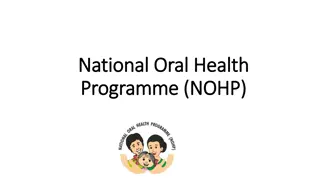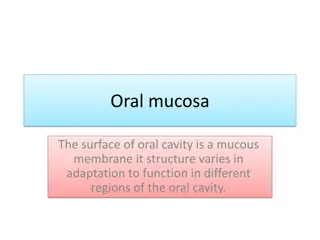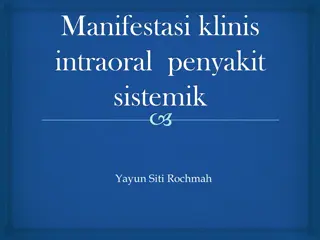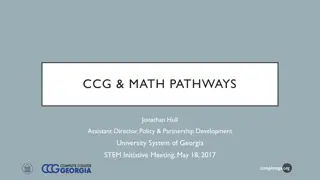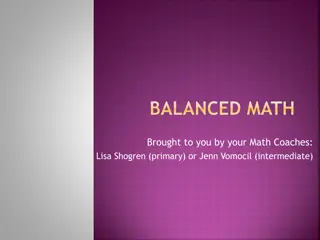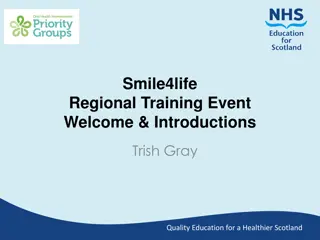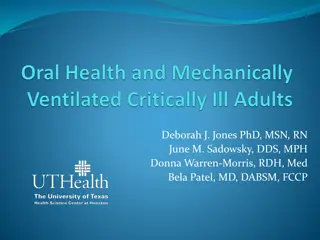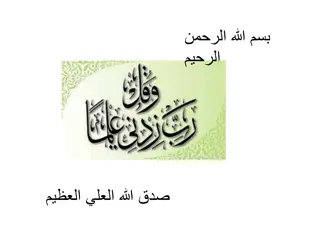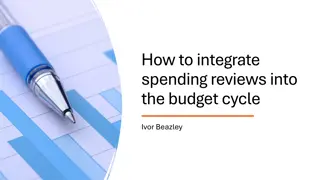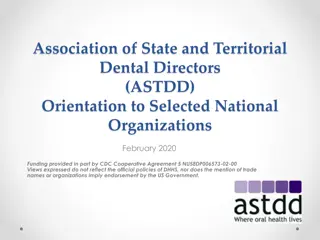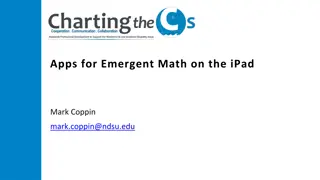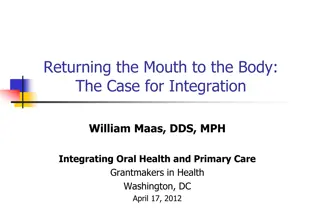Enhancing Math Learning Through Oral Reviews
Engage in oral reviews to help students tackle challenging math concepts, leading to improved success rates in calculus courses. By fostering metacognitive skills and boosting confidence, students can better understand and connect mathematical principles, ultimately enhancing their academic performance and attitudes towards math.
Download Presentation

Please find below an Image/Link to download the presentation.
The content on the website is provided AS IS for your information and personal use only. It may not be sold, licensed, or shared on other websites without obtaining consent from the author. Download presentation by click this link. If you encounter any issues during the download, it is possible that the publisher has removed the file from their server.
E N D
Presentation Transcript
Oral Reviews: Helping Students Make Connections Mary Nelson Stephen Liddle, Noyce Scholar George Mason University Supported by NSF Noyce and IUSE grants and GMU STEM Accelerator
Impetus for Oral Reviews (Orals) -40% of all College students have taken at least one Calculus course by the time they graduate 40% of all students who take Calculus I fail it the first time More than half the patents awarded here last year were given to companies from outside the United States. The United States ranks 27thof 29 wealthy nations in the proportion of college students receiving undergraduate degrees in science or engineering. Too often, science curriculums are grinding and unimaginative, which may help explain why more than half of all college science majors quit the discipline before they earn their degrees.
Two-semester Calculus I Course with Oral Reviews Designed for students predicted to fail Calculus I Includes on-time teaching of Pre-calculus concepts Large percentage of first generation college students and minorities Consistently changes passing rates from less than 20% to over 80% These students go on to pass Calculus II at rates similar to other one-semester Calculus I students One important ingredient in the success of the two-semester course was oral reviews
How to Accommodate Students Scoring 3 on AP Credit for first semester of Calculus I Enroll in second semester Earn 3 college credits for AP 3 Earn 3 credits for second semester Results: 4 credits for Calc I and 2 math elective credits
Oral reviews One hour with 6+ students in small room with lots of white boards Voluntary and ungraded Begin by writing their first names on the board Students are asked scripted conceptual questions - not find this derivative , but if the derivative is -7 at x =2, what does that tell you? - not linearize this functions , but if you linearize a function, what are you doing? Why? Can you draw a graph and explain how it works?
Benefits of Oral Reviews Students negotiate meaning and make mathematical connections Students learn to be far more metacognitive about their own learning Students feel more confident in their mathematical ability Students display more expert views on the nature of mathematics.
Results of Two-semester Course Over 85% of the students in the two-semester course passed Calculus I, whereas only 16% of the at-risk students who remained in the regular course passed. We followed the at-risk control and treatment students for three years and found that 56% of the two-semester students enrolled in Calculus II compared to only 20% of the one-semester at-risk. Of those who took Calculus II, the pass rates for treatment students were slightly higher: 89% of treatment students and 80% of the control passed Calculus II.
Orals in Large Classes Logistical challenge Results have been striking (next two slides) Improves students grades at all ability levels Reduced failure rates from 9 year average of 31% to five year average of 22% Improves students confidence in their ability to understand the material Convinces students that their instructors, TAs and LAs care Data shows improved attendance, increase in homework, improved grades and IMPROVED RETENTION RATES in STEM majors
Success rates by Preparation Level
Reduction in Failure Rates for Calculus I 35 30 25 20 15 10 5 0 Calculus I Calculus 2 9 year AVG, Calc1 and 2 2007-2008
Personal Stories of Learning Assistants Student G graduated in Math in 2009 and now teaches mathematics at a Colorado High School. This will be her sixth year teaching mathematics. Student M, born in Mexico and a native Spanish speaker, graduated in Applied Math in 2009. She now teaches mathematics in a high school in Denver, CO. Student R graduated in Mathematics in 2009, and did graduate study in Education at the University of Denver, on a Boettcher Scholarship. Student Z graduated in Applied Math. in 2010, and is now completing graduate study at Columbia Teachers College, New York, on a Math for America Master Teacher Fellowship. Student S graduated in Applied Mathematics in 2012 and received the Knowles Teaching Fellowship. Student E graduated in 2014 from GMU. She was a Noyce scholar and a finalist for the Math for America program in New York. She begins her graduate study in Education at Columbia in the fall. Student N is a single mother of two who is Noyce scholar planning to student teach in the spring of 2015. She was the subject of a CNN feature story in June 2014.
Questions? Contact: mnelso15@gmu.edu
Research Questions: In what ways does the peer-mentoring Learning Assistant network provide opportunities for meaningful articulation of student learning across the STEM disciplines? How does the use of oral reviews allow the faculty to develop student understanding in their respective STEM disciplines? Do student performance, attitude changes towards STEM, and student learning enhanced through the proposed activities create a successful pathway for retention in STEM majors?
Tools and Methods used in Calculus I Four essential ingredients: 1) an entrance exam; 2) an extended two-semester course; 3) oral reviews and 4) Learning Assistants/ Noyce Scholars.
Entrance Exam Created by Associate Chair of the Department, CU Boulder Applied Math Has 30 questions taken from Algebra I and II and Trigonometry Predicts over 50% of the variance in student grades Best predictor of course grade considering over 20 variables Students who score below 18 (out of 30) on the entrance exam have a less than 20% chance of passing Exam allows us to accurately place students How do we help these students?

 undefined
undefined








